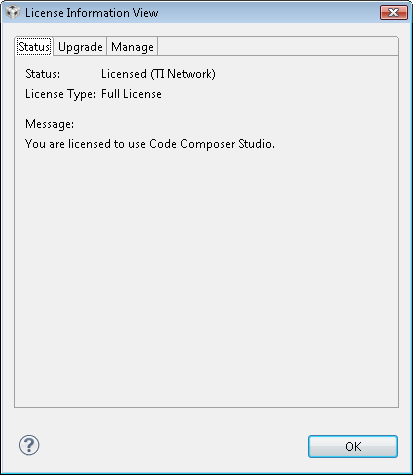bsp
Very Active Member
- Joined
- Dec 2, 2006
- Messages
- 314
Shenmue: Unhelpful answer: what ekianjo said.  more helpful: a list of documents/manuals that I have gathered so far (there are lots more!):
more helpful: a list of documents/manuals that I have gathered so far (there are lots more!):
sprugn4r.pdf [http://www.ti.com/lit/ug/sprugn4r/sprugn4r.pdf] - "AM/DM37x Multimedia Device Silicon Revision 1.x Version R Technical Reference Manual"
spruf98x.pdf [http://www.ti.com/lit/ug/spruf98x/spruf98x.pdf] - "OMAP35x Applications Processor Technical Reference Manual" (more complete than the previous document. the differences between DM3730 (1Ghz Pandora) and OMAP3530 seem so small that I'd recommend this manual.)
spraao8.pdf [http://www.ti.com/lit/an/spraao8/spraao8.pdf] - "Common Object File Format" (DSP images)
Chapter10.ppt [http://www.ti.com/ww/cn/uprogram/share/ppt/c6000/Chapter10.ppt] - Introduction to interrupts, Types of interrupts and sources, Interrupt timeline, Handling and processing interrupts using C and assembly code.
spra829.pdf [http://www.ti.com/dsp/docs/litabsmultiplefilelist.tsp?sectionId=3&tabId=409&literatureNumber=spra829&docCategoryId=1&familyId=326] - "DSP/BIOS Timers and Benchmarking Tips"
spru656a.pdf [http://www.ti.com/lit/ug/spru656a/spru656a.pdf] - "TMS320C6000 DSP Cache User’s Guide"
spru425a.pdf [http://www.ti.com/lit/ug/spru425a/spru425a.pdf] - "TMS320C6000 Optimizing C Compiler Tutorial"
spru190q.pdf [http://www.ti.com/lit/ug/spru190q/spru190q.pdf] - "TMS320C6000 DSP Peripherals Overview / Reference Guide" (contains many links to other documents)
spru198k.pdf [http://www.ti.com/lit/ug/spru198k/spru198k.pdf] - "TMS320C6000 Programmer’s Guide"
spru871k.pdf [http://www.ti.com/litv/pdf/spru871k] - "TMS320C64x+ DSP Megamodule Reference Guide"
spru732j.pdf [http://www.ti.com/litv/pdf/spru732j] - "TMS320C64x/C64x+ DSP CPU and Instruction Set"
c6xbios.hlp [installed with CCS, on my system its @ C:\ti\bios_5_41_13_42\packages\ti\bios\help\doc] - "TMS320C600 DSP/BIOS Help"
spru007i.pdf [http://www.ti.com/lit/ug/spru007i/spru007i.pdf] - "DSP/BIOS 5.40 Textual Configuration (Tconf) User’s Guide" (in case you're wondering what those .tci and .tcf files in the example DSP image project are used for)
sprugn4r.pdf [http://www.ti.com/lit/ug/sprugn4r/sprugn4r.pdf] - "AM/DM37x Multimedia Device Silicon Revision 1.x Version R Technical Reference Manual"
spruf98x.pdf [http://www.ti.com/lit/ug/spruf98x/spruf98x.pdf] - "OMAP35x Applications Processor Technical Reference Manual" (more complete than the previous document. the differences between DM3730 (1Ghz Pandora) and OMAP3530 seem so small that I'd recommend this manual.)
spraao8.pdf [http://www.ti.com/lit/an/spraao8/spraao8.pdf] - "Common Object File Format" (DSP images)
Chapter10.ppt [http://www.ti.com/ww/cn/uprogram/share/ppt/c6000/Chapter10.ppt] - Introduction to interrupts, Types of interrupts and sources, Interrupt timeline, Handling and processing interrupts using C and assembly code.
spra829.pdf [http://www.ti.com/dsp/docs/litabsmultiplefilelist.tsp?sectionId=3&tabId=409&literatureNumber=spra829&docCategoryId=1&familyId=326] - "DSP/BIOS Timers and Benchmarking Tips"
spru656a.pdf [http://www.ti.com/lit/ug/spru656a/spru656a.pdf] - "TMS320C6000 DSP Cache User’s Guide"
spru425a.pdf [http://www.ti.com/lit/ug/spru425a/spru425a.pdf] - "TMS320C6000 Optimizing C Compiler Tutorial"
spru190q.pdf [http://www.ti.com/lit/ug/spru190q/spru190q.pdf] - "TMS320C6000 DSP Peripherals Overview / Reference Guide" (contains many links to other documents)
spru198k.pdf [http://www.ti.com/lit/ug/spru198k/spru198k.pdf] - "TMS320C6000 Programmer’s Guide"
spru871k.pdf [http://www.ti.com/litv/pdf/spru871k] - "TMS320C64x+ DSP Megamodule Reference Guide"
spru732j.pdf [http://www.ti.com/litv/pdf/spru732j] - "TMS320C64x/C64x+ DSP CPU and Instruction Set"
c6xbios.hlp [installed with CCS, on my system its @ C:\ti\bios_5_41_13_42\packages\ti\bios\help\doc] - "TMS320C600 DSP/BIOS Help"
spru007i.pdf [http://www.ti.com/lit/ug/spru007i/spru007i.pdf] - "DSP/BIOS 5.40 Textual Configuration (Tconf) User’s Guide" (in case you're wondering what those .tci and .tcf files in the example DSP image project are used for)
Last edited by a moderator:


